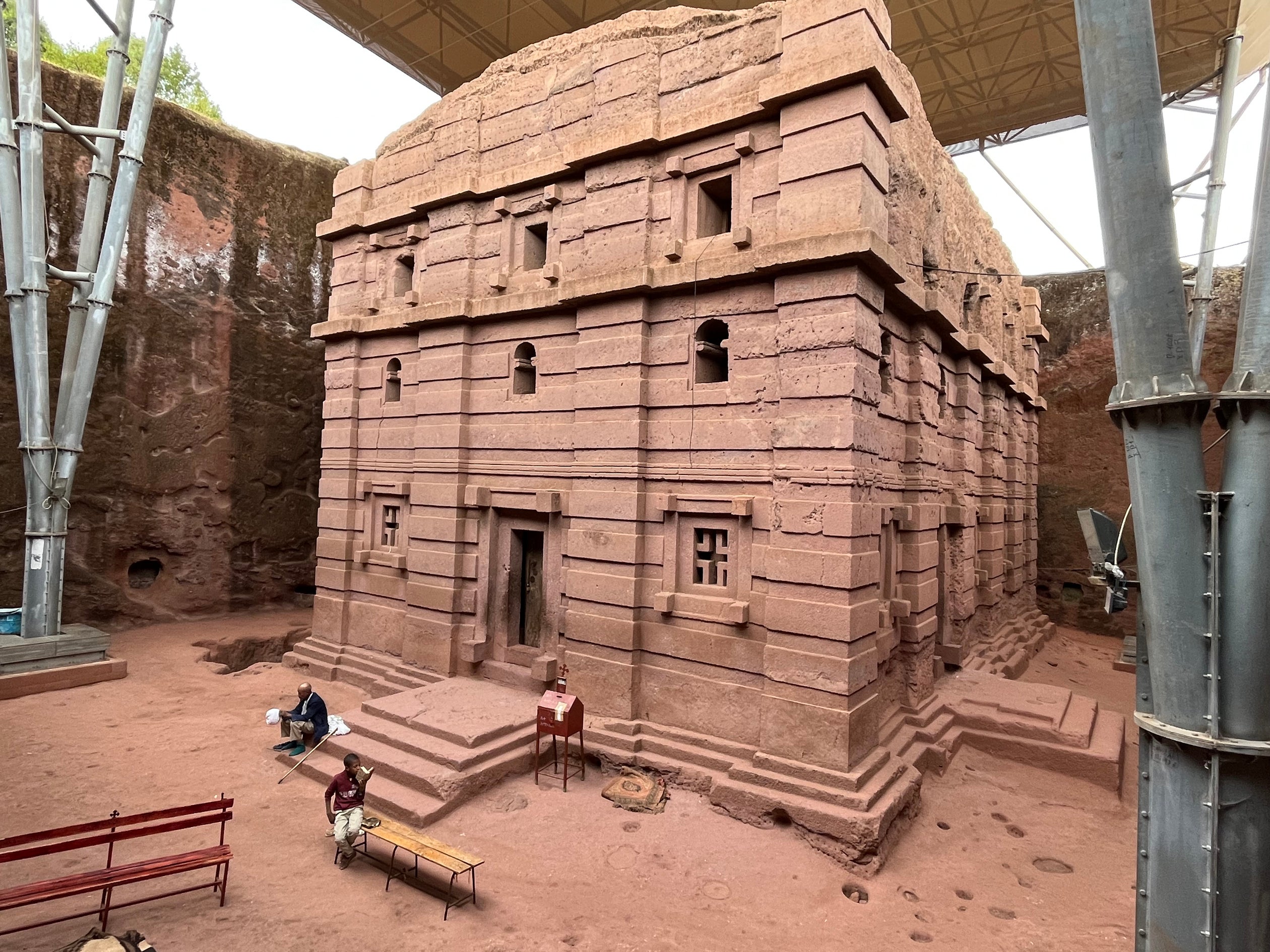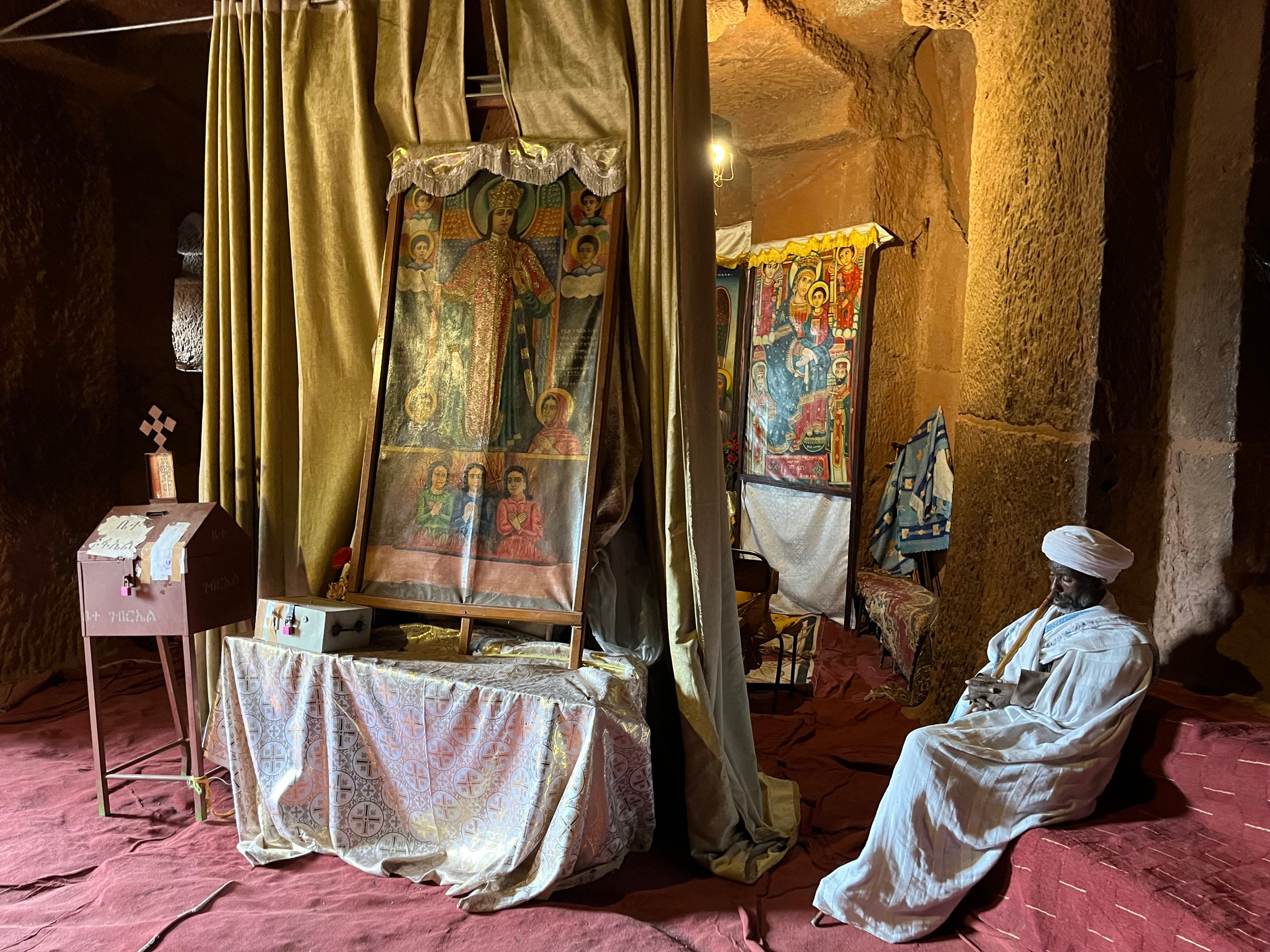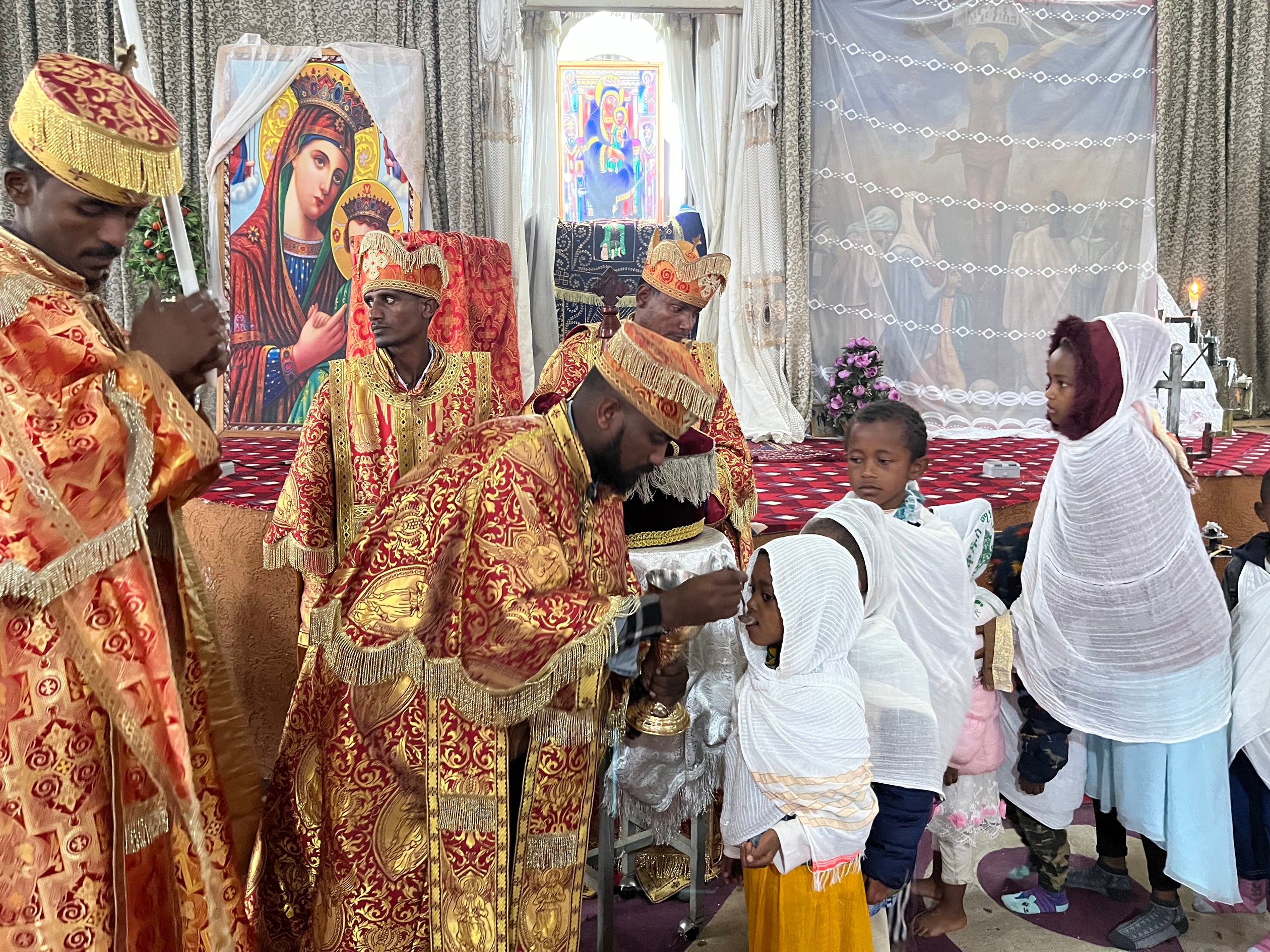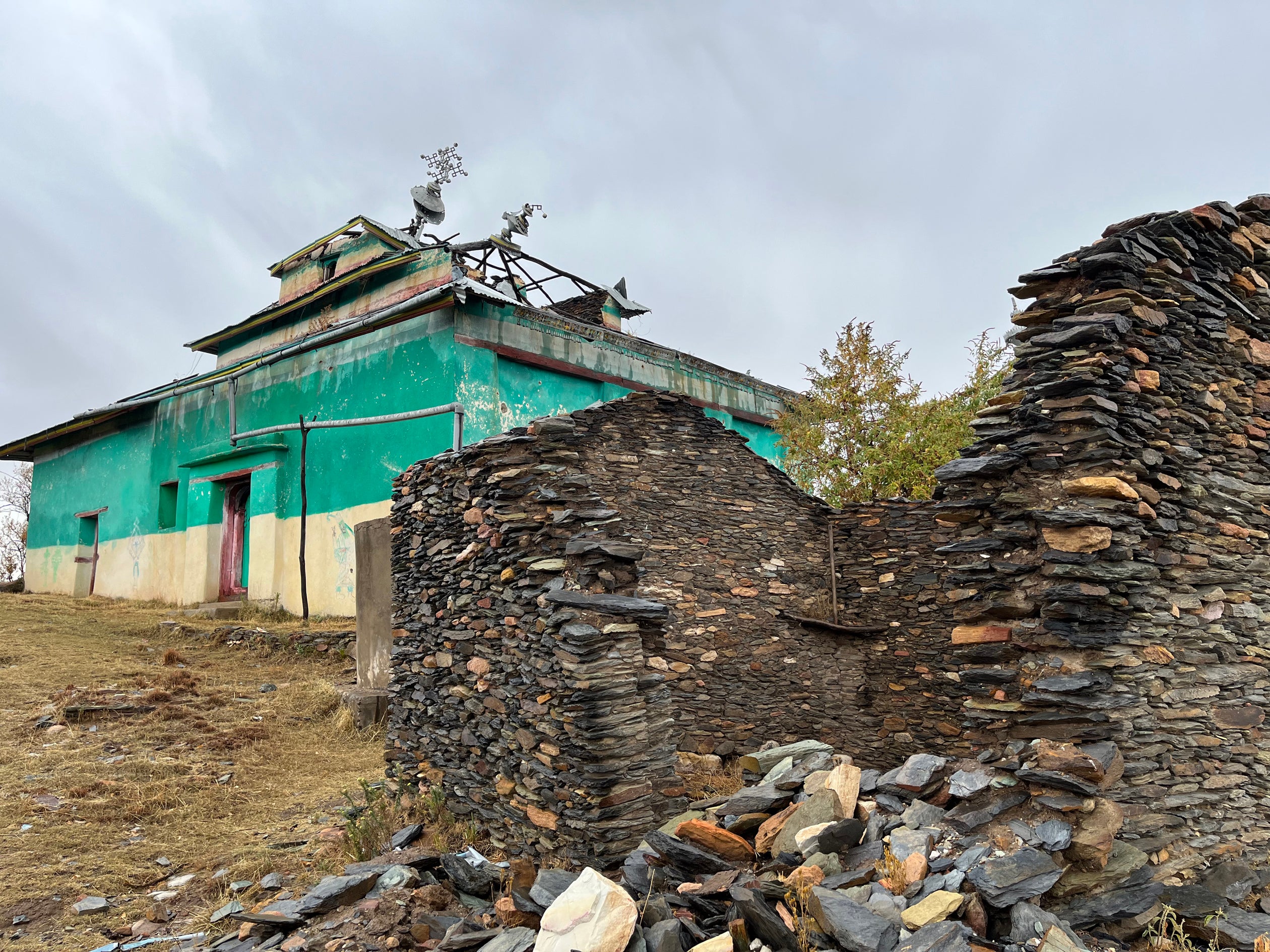‘If bishops speak for war, then who is left to speak for peace?’
In Ethiopia, divisions in the Orthodox church, once a unifying force in a country fraught with conflict, pose a new threat, finds Katharine Houreld

For years, the Ethiopian Orthodox Tewahedo Church has been one of the few institutions that helped bind this war-riven country together, unifying disparate ethnic groups around worship as their bitter differences threatened to tear Ethiopia apart.
But this year, the church has been battling to heal its own divisions, triggered by language, politics, resources and war. The schisms, peppered with biblical references to betrayal, are far from theoretical. They reflect the wider tumult in Ethiopia, Africa’s second-most-populous country.
In February, church officials said at least 30 people were killed and hundreds wounded after rebel bishops from the southern Oromia region, home to the Oromo ethnic group, tried to install new clergy they had ordained as bishops in defiance of Abune Matthias, who heads the country’s church as its patriarch. Oromia is Ethiopia’s largest region and its most populous.
The bishops had accused the church of neglecting their region, and each side excommunicated the other. Ethiopian prime minister Abiy Ahmed hastily stepped in to mediate when the two opposing sides threatened to hold competing demonstrations in the capital during an African Union heads of state summit.

In the northern Tigray region, churches have been looted, bombed and burnt down during the two-year civil war between central government forces and Tigrayan rebels. Priests have been killed and their female relatives gang-raped. Matthias’s chief of staff, a Tigrayan, was arrested six times, and the patriarch himself was held under virtual house arrest after smuggling out a video in which he denounced crimes against civilians.
A November peace deal ended the armed conflict, but bishops in Tigray say the church supported the war and remained silent about deliberate crimes against civilians.
Late last month, the General Synod announced that it had struck a deal with the Oromo bishops, rescinding their excommunication on the understanding that those they consecrated would not be considered bishops. The General Synod also announced it would send a delegation to Tigray, seeking to repair that schism.
Church and state have been intertwined since Orthodox Christianity became Ethiopia’s state religion in AD340. The lips of generations of pilgrims have smoothed the door frames on its millennia-old rock-hewn churches. Inside, naked bulbs illuminate intricately gilded paintings of Ethiopia’s four sainted kings.
Even now, clergy wield immense power. Church leaders do everything from facilitating peace talks to documenting war crimes. They are expected to be deeply involved in “transitional justice” efforts to address atrocities that occurred during the war in northern Ethiopia, which is believed to have cost hundreds of thousands of lives.
Oromos just want to be equal. People want services in their own language, with their own culture understood
But the church’s ability to help heal Ethiopia depends crucially on whether the church can heal itself. “Our faith is our lifeblood. If a vein has been cut, you will die. It has no cure,” Matthias said in January. “The Orthodox Tewahedo Church is the lifeblood to all of us, and because of this we should all protect her.”
It’s not just Ethiopia that is affected. The church has hundreds of thousands of worshipers abroad, including in America, Australia and Europe.
Rebellion of the Oromo bishops
Some bishops say the current chapter started in 2018, months after Abiy took power. He flew to the United States to personally bring home 24 bishops forced into exile during the previous change of government in 1991, when an alliance led by the Tigray People’s Liberation Front (TPLF) toppled the communist Derg regime. The bishops who stayed and those who fled had excommunicated each other.
This public reconciliation of the bishops won Abiy public plaudits. But some Oromo bishops felt the return of the exiles – many of whom were from the Amhara ethnic group – upset the synod’s balance of power.
“Oromos just want to be equal,” says Hailemichael Tadesse Kefeni, a spokesman for the church’s breakaway Oromo faction. “People want services in their own language, with their own culture understood.”
Oromia accounts for around a third of Ethiopia’s 120 million citizens, although many are Muslim, evangelical or Protestant rather than Orthodox. Only a small fraction of active Orthodox bishops are Oromo, which Hailemichael says reflects the historical political marginalisation of his community. Others argue it’s because so many Oromo belong to different faiths.
Few services are held in the Afaan Oromo language, because few Oromo priests and deacons are being trained, and the lack of Afaan Oromo services was driving people away from the Orthodox church toward Protestant churches, Hailemichael says.
Frustrated by what they said was the slow pace of reform, three Oromo bishops ordained 26 priests as bishops in February without the patriarch’s approval. They in turn appointed Bishop Sawiros to be head of the new Oromo synod.
“Most priests in Oromia are from the north,” Sawiros complains, referring to the highlands of Amhara and Tigray, which have traditionally dominated Ethiopian national politics. “Our people do not have opportunities.”

The bishops’ rebellion came against the backdrop of fierce competition for power and resources among the country’s different regions after Abiy’s government sped up political changes. Since Abiy swept into power five years ago, Ethiopia has seen the rise of ethnically based militias and horrific massacres of thousands of civilians, especially along the border between Oromia and Amhara, the two largest and most powerful regions.
Many Amhara fear what they see as increasing aggression by some Oromo political leaders. There have been increasingly deadly attacks on Amhara civilians in Oromia, and some Oromos claim that the multiethnic Ethiopian capital, Addis Ababa, is Oromo territory.
When the three bishops acted without church approval, bishops from outside Oromia feared an ethnically motivated power grab backed by the regional government. “Oromo politicians think that if they can control the church, they can control all Ethiopians,” said Bishop Petros, one of the Amhara bishops who returned with Abiy from the United States. “This is for ... money and power.”
What happened next is disputed. The three Oromo bishops say armed protesters began a riot. Other bishops say Oromo security forces accompanying the new bishops fired on peaceful protesters. Clips on social media showed Oromo police breaking locks on the church doors, and a policeman slapping a protesting priest. Other clips show gunfire and screaming.
Hundreds of people were hospitalised, according to church and medical officials.
While the church objects strongly to the rebellion, Lisanewerk Desta, chief of staff to the patriarch, acknowledges that Oromo priests are underrepresented and Afaan Oromo services should be expanded. The church has established a training college in Oromia and is promoting dual language services, he says.
On a rainy morning last month in the Oromia town of Ambo, a liturgy and a lesson were read in Afaan Oromo. Curls of frankincense unfurled in the air as a choir of children, immaculate in white despite the mud, sung God’s praises. The church recently began alternating between Amharic and Afaan Oromo services, a priest explained.
But even this scene was contested. Afterward, a local teacher, Duguma Fulea, texted a reporter, alleging it was all a fraud, complaining that the priests were all from the north, not Oromia. Other residents said the service was genuine.
Tigrayan bishops split
On a recent day in the Tigray region, raindrops fell through the damaged roof of the Amanuel Maago church, splashing on a sanctuary floor marked by mortar fire. A witness said that the mortars, fired by Eritrean troops allied to the Ethiopian government, had killed several residents during the first month of the civil war.
Now, paint peels from an iron cross marking one victim’s grave. Puddles collect inside the church. The only signs that the damaged building is not abandoned are the bunches of freshly cut, fragrant grass that devotees traditionally strew in places of worship.
This church is one of dozens damaged during the war, the Tigray church secretariat says. Scores of priests were slain during the mass killing of civilians.

Anger over those atrocities – and what they describe as the church’s complicity – prompted Tigrayan bishops to declare in November they were also splitting from the church to form their own synod. “We want an apology, and we want recognition, and we want compensation,” says Tesfaye Hadera, the secretary for the Tigray bishops.
Last month, the Ethiopian church wrote to the Tigrayan bishops, blaming “politics” for coming between them and suggesting the two estranged branches meet. The letter was rejected. Some Tigrayan priests pointed out there was no apology and said the church only reached out because it wanted help in containing the clerical rebellion in Oromia.
Late last month, the Tigrayan bishops appointed a bishop to oversee Tigrayan worshipers in the diaspora. The main Ethiopian church said this move threatened “the institutional unity and existing structural organisation of our church”.
Tesfaye says the rest of the church does not yet realise the hurt and anger in Tigray. “Bishops spoke in favor of the war!” he burst out. “If bishops speak for war, then who is left to speak for peace?”
© The Washington Post






Join our commenting forum
Join thought-provoking conversations, follow other Independent readers and see their replies
Comments